 |
Emergency Animal Recall - Gorillas |
2.00 |
Welcome to Emergency Animal Recall. This collection consists of an overview course which covers the fundamentals of Emergency Recall training for exhibit animals, including:
What exactly is Emergency Animal Recall, and why is it necessary?
What are the benefits of Emergency Animal Recall?
How do you generate support within your organization for a training program, and how do you decide which animals should be trained first?
What equipment will you need, and what preparations will you need to make?
What is the general outline of an Emergency Recall training program, and how do you maintain the conditioning once it has been established?
After completing this Overview, you can continue with the species-specific Gorillas Emergency Animal Recall course.
|
 |
Emergency Animal Recall - Lions |
2.00 |
Welcome to Emergency Animal Recall. This collection consists of an overview course which covers the fundamentals of Emergency Recall training for exhibit animals, including:
What exactly is Emergency Animal Recall, and why is it necessary?
What are the benefits of Emergency Animal Recall?
How do you generate support within your organization for a training program, and how do you decide which animals should be trained first?
What equipment will you need, and what preparations will you need to make?
What is the general outline of an Emergency Recall training program, and how do you maintain the conditioning once it has been established?
After completing this Overview, you can continue with the species-specific Lions Emergency Animal Recall course. |
 |
Emergency Animal Recall - Brown Bears |
2.00 |
Welcome to Emergency Animal Recall. This collection consists of an overview course which covers the fundamentals of Emergency Recall training for exhibit animals, including:
What exactly is Emergency Animal Recall, and why is it necessary?
What are the benefits of Emergency Animal Recall?
How do you generate support within your organization for a training program, and how do you decide which animals should be trained first?
What equipment will you need, and what preparations will you need to make?
What is the general outline of an Emergency Recall training program, and how do you maintain the conditioning once it has been established?
After completing this Overview, you can continue with the species-specific Brown Bear Emergency Animal Recall course. |
 |
Emergency Animal Recall - Tigers |
2.00 |
Welcome to Emergency Animal Recall. This collection consists of an overview course which covers the fundamentals of Emergency Recall training for exhibit animals, including:
What exactly is Emergency Animal Recall, and why is it necessary?
What are the benefits of Emergency Animal Recall?
How do you generate support within your organization for a training program, and how do you decide which animals should be trained first?
What equipment will you need, and what preparations will you need to make?
What is the general outline of an Emergency Recall training program, and how do you maintain the conditioning once it has been established?
After completing this Overview, you can continue with the species-specific Tigers Emergency Animal Recall course. |
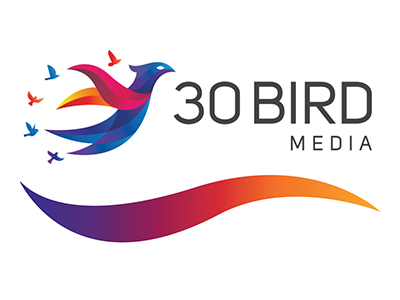 |
CompTIA Server+ Certification - Exam SK0-005 |
40.00 |
Welcome to CompTIA Server+ SK0-005. This course provides the basic knowledge needed to assemble, install, maintain, and troubleshoot modern servers in a vendor-neutral format; this includes physical components and technologies, operating systems and networking, security controls, and troubleshooting. This course maps to the CompTIA Server+ certification exam SK0-005.
This course assumes that you have basic knowledge of using and maintaining individual workstations. Knowledge equivalent to the CompTIA A+ certification is helpful but not necessary. |
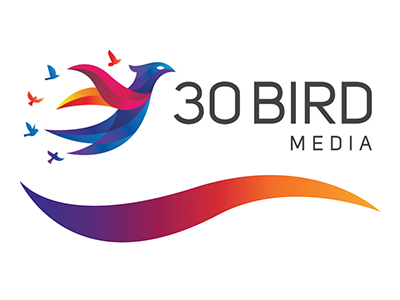 |
CompTIA Linux+ Certification - Exam XK0-005 |
24.00 |
Welcome to CompTIA Linux+ XK0-005. This course provides the basic knowledge needed to install and manage modern Linux systems in a vendor-neutral format. It includes usage of fundamental operating system tools, networking and storage, applications and services, account management, access controls, scripting, automation tools, and troubleshooting. This course maps to the CompTIA Linux+ certification exam.
You will benefit most from this course if you intend to take a CompTIA Linux+ XK0-005 exam.
This course assumes that you have basic knowledge of using and maintaining individual workstations. Knowledge equivalent to the CompTIA A+ certification is helpful but not necessary. |
 |
Combating Sexual Harassment in the Workplace (Corrections) |
1.00 |
Welcome to Combating Sexual Harassment in the Workplace. This course was created by CypherWorx in alignment with training materials developed by New York State. While nearly a dozen states have enacted sexual harassment legislation, New York is among those with the strongest and most stringent proposed sexual harassment laws in the nation. (complianceweek.com). This course may be used as a general sexual harassment training, however, you should check with your state and local municipality for other important requirements. |
 |
Combating Sexual Harassment in the Workplace |
1.00 |
Welcome to Combating Sexual Harassment in the Workplace. This course was created by CypherWorx in alignment with training materials developed by New York State. While nearly a dozen states have enacted sexual harassment legislation, New York is among those with the strongest and most stringent proposed sexual harassment laws in the nation. (complianceweek.com). This course may be used as a general sexual harassment training, however, you should check with your state and local municipality for other important requirements. |
 |
A K-12 Student Guide to Implicit Bias |
1.00 |
Welcome to A K-12 Student Guide to Implicit Bias. In this course geared towards K-12 students, you'll examine implicit bias, why it matters, and what can be done to address it. |
 |
Climate Change and the Polar Bear |
1.00 |
We will discuss the causes and impacts of global climate change, especially as they pertain to the majestic Arctic species Ursus maritimus, the polar bear. Learn how scientists at the San Diego Zoo are using innovative techniques to test for potential negative impacts of human industrial activities in the Arctic on the largest and most carnivorous bear in the world. |
 |
Constructing: Airway Essentials—Part 1 |
0.50 |
We think that you will appreciate the opportunity to review the essential aspects of Airway Assessment and Management with one of the most dedicated paramedics that you can find: Chris Galton. As a Transplant Anesthesiologist and a Paramedic, Galton has spent countless hours learning to assess and maintain some of the most difficult patient airways out there. Instead of going to bed after staying up all night on a liver transplant case, Galton showed some paramedic-style grit and shared some knowledge with Rachel and Rich (two experienced paramedics). The cameras were rolling and you will want to see what they spoke about. |
 |
The Stages of Community—How to Create Effective Group Dynamics in the Workplace |
1.00 |
We may not be uniform—in race, politics, gender, generation, etc.—but we can be unified in love and service. This is how we get there: Stage One is Psuedo-community. Relationships are a half an inch deep and fake. We pretend we all get along, but we really can’t stand each other. Stage Two is Chaos. We quit pretending that we like each other, we finally aired our differences, and now the battle has begun to change each other. Stage Three is Surrender. We’ve accepted that we are stuck with each other, and we’ve proven that we’ve only hurt each other in the process of trying to change each other. Finally, though, we’re willing to surrender our agenda (and all other barriers to our communication) so that we might understand one another. Now we have hope. Stage Four is Community. We still don’t agree on everything, but we’ve learned to treat each other with dignity and respect. Our campus is a relationally safe environment. We share a sense of belonging and purpose. This is the place where lives are impacted. Everyone wants to be on this campus. |
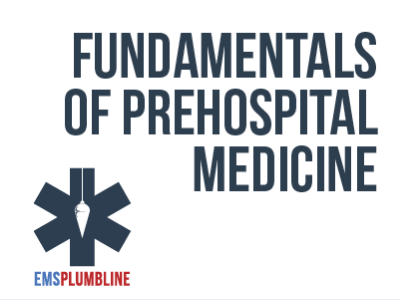 |
Brick by Brick: Assessing the Elderly—Female Cardiac Patient |
1.00 |
We know that there are unique challenges when assessing elderly patients. BLS providers also encounter unique challenges when assessing females for potential cardiac problems. This lesson briefly reviews the BLS assessment skills that are required for both populations. The introduction of 12-lead ECG acquisition gives the BLS provider a chance to orient themselves to the skills necessary when working in a system that requires recording and/or transmission of such tracings. The multiple choice exam is designed to test your knowledge of the material you just reviewed. You have two attempts to gain an 75% or higher on this exam. Please take your time and answer each question carefully. |
 |
The Stages of Escalation and How to Manage Them |
1.00 |
We know that the most effective learning is relationally based. The same is true when we intervene with students in crisis: the deeper we’ve established relationships with students, the more power we have to guide them to calm and safety. Crisis situations can leave a wake of difficult thoughts and feelings. Students and teachers can feel lingering shame, anger, fear and confusion for days—even weeks or months—after a traumatic event. The good news is that crisis situations do not have to be harmful to a relationship, and in fact, they can serve as a doorway to deeper trust, intimacy, and respect. |
 |
EMS Response to Reported Shootings |
1.00 |
We handpicked these two paramedics to speak about the challenges of caring for shooting victims. Eric Rathfelder has a rich educational background and works in an urban setting as a police sergeant. Sean Riemer is a well-respected trainer in a rural setting. The conversation that ensues will spark discussion in your agency whether you are in a rural, suburban, or urban environment.
Final Exam: This multiple-choice exam is designed to test your knowledge of the material you just reviewed. You have two attempts to gain an 80% or higher on this exam. Please take your time and answer each question carefully. |
 |
Building Upward: BLS Diabetes Discussions |
2.00 |
We captured an engaging discussion between a retired ALS provider and a system medical director. Michelle Cerone and Dr. Jeremy Cushman spoke about the topic of diabetes. Refreshing BLS providers can use the information from the discussion and the scenarios that were built following its conclusion to meet minimum competencies and more.
Final Exam: This multiple-choice exam is designed to test your knowledge of the material you just reviewed. You have two attempts to gain an 75% or higher on this exam. Please take your time and answer each question carefully. |
 |
Effective Communication with Children and Youth |
2.00 |
We are constantly communicating with the children and youth in our program through our words and actions. It's important for program staff to think critically about their communication skills and habits in order to communicate effectively. During this course, participants will learn about effective and dynamic communication tools, strategies to check for understanding, and activities that engage children and youth in communication. |
 |
I Belong: Supporting Social Awareness and Interpersonal Skills |
2.00 |
We all have lived full lives with varied experiences, both positive and negative. Whether we are aware or not, our experiences, including our social, political and cultural beliefs and background, affect our practice with youth. During this course, participants will learn about how culturally grounded beliefs and background affect our practice with youth, how to help raise our awareness of those factors, and reflect on current and new strategies that support the development young people’s social-awareness and interpersonal skills. |
 |
I Can: Supporting Growth Mindset and Self-Efficacy |
2.00 |
We all have areas in our life that we approach with a growth mindset and others we approach with a fixed mindset. In order for us to be positive role models to youth, we as adults need to reflect on our own mindsets and how they may impact how we behave at work and with youth. During this course, participants will learn about what self-efficacy and growth mindset are, explore our own mindset and the potential impact it has on youth, and reflect on current and new strategies to support the development young people’s growth mindset and self-efficacy. |
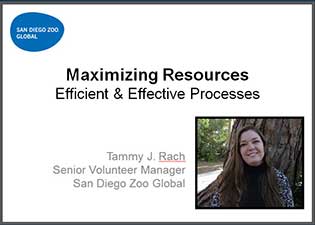 |
Maximizing Resources Efficient and Effective Practices (Webinar) |
1.50 |
Volunteers are not free, and it takes a great deal of skill to manage their engagement appropriately while still accomplishing the goals of your organization. When resources are tight, how frequently do you hear, “just have the volunteers do it”? It’s easy to get overwhelmed with all there is to accomplish while swimming in a sea of volunteer requests. Learn skills and strategies for identifying the time and energy vampires you are dealing with, and how to flip them into efficient and effective practices that both save your sanity and accomplish your organizations goals. |
 |
Más allá del Correo Electrónico (Spanish) Beyond Email |
1.00 |
Veremos algunos métodos diferentes de comunicación en línea, incluidos el chat, las videollamadas, los mensajes de texto y las actualizaciones de estado.
We'll take a look at some different methods of online communication, including chat, video calling, text messages, and status updates.
|
 |
VAD Educational Updates for the Prehospital Care Provider |
1.00 |
Ventricular Assist Devices (VADs) are not new devices. In fact, the first successful use of such a device was described in 1966. Since then, and particularly in the past few years, VAD design and safety has improved significantly and are now commonly implanted devices.
This course strives to bring prehospital providers current with the most commonly implanted devices at the time - this course will not cover every device that a prehospital provider may encounter.
Following successful completion of the material, the provider should feel comfortable recognizing the VAD patient when encountered in the community, have an understanding of the basic VAD components, be able to assess the VAD patient's hemodynamic status, and be able to deliver care in the prehospital setting. |
 |
Basic Tech Tools for Paraprofessionals |
1.75 |
uThis course covers basic technology tools for paraprofessionals. It is just one out of many paraprofessional courses we offer. This course is designed to empower paraprofessionals and educators with essential technological skills and tools that can enhance teaching and learning in K-12 classrooms. Participants will learn how to effectively integrate various digital tools, platforms, and applications to improve instruction, communication, and organization. This course will help you develop new knowledge about students and will help you understand what your role as a paraprofessional is. |
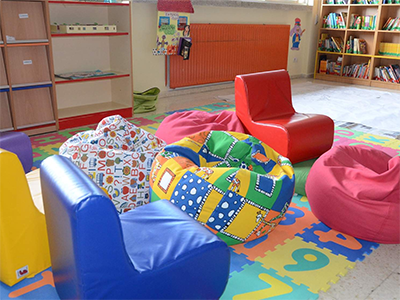 |
Management of Effective Preschool Child Care Environments (CDA 1) |
2.00 |
Unlocking preschool potential through nurturing environments: This course equips you with the knowledge and skills to create spaces that ignite young minds and support healthy development. Explore how to design engaging, child-centered environments and routines that adapt to individual needs, cultural influences, and developmental milestones. Learn to assess your current preschool environment and craft targeted strategies for improvement, fostering a dynamic learning space where every child thrives. |
 |
Enhancing Emotional Literacy in Children from Birth to Age 3 (CDA 3) |
2.00 |
Unlock the potential of your preschoolers! This course equips you with the Pyramid Model's and Center on the Social and Emotional Foundations for Early Learning's (CSEFEL) evidence-based strategies for nurturing their social and emotional development. Watch their confidence bloom as they build strong relationships, navigate emotions, and develop vital self-regulation skills. Invest in their school readiness and overall well-being with these powerful tools! |


























